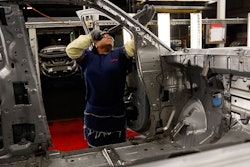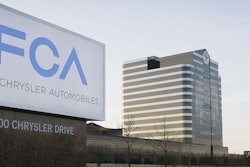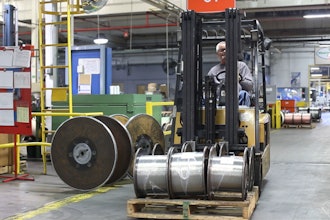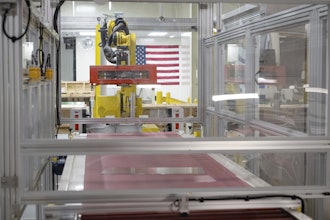In a 2011 article for IMPO, I observed that the industrial battery room was the last frontier for Lean implementation in the warehouse and distribution center. I noted that seven of the eight types of waste can be found in the battery room. I cited a report that found that waste in the battery room can cost large warehouses and DCs hundreds of thousands of dollars per year. Going further, I identified three major impacts on battery room operation that managers must address in order to achieve measurable and sustainable elimination of waste: battery rotation, right-sizing the battery room and battery watering.
At the time, many battery rooms were beginning to employ tools to address these impacts.
Battery rotation: Battery room management systems are the single most effective tool for ensuring proper battery rotation. The best systems monitor all batteries in a pool and identify which battery a forklift operator should take when changing batteries — the one that has had the longest cooling time since charging. The benefits of rotating batteries at the right time — all which save time and money — include:
- faster battery changes
- fewer battery changes
- longer battery run times
- longer battery life
Right-sizing the battery room: Battery room management systems help managers properly match the size of their battery fleet to the operational needs of the forklift fleet. Some systems are available with a Web-based service, which enables users to analyze asset utilization and availability and proper battery rotation while identifying faulty chargers. This information helps managers ensure that their facility does not have too few batteries, which reduces productivity — or too many batteries, which wastes money.
Right-sizing remains one of battery room managers’ biggest challenges. Nearly every battery room I’ve visited over more than a decade had more batteries or chargers than they needed. It has been standard practice for most battery rooms to operate with three batteries for each forklift truck, which is nearly always too many. When you have too many batteries, it costs you money in several ways:
- the cost of the battery
- the batteries take up unnecessary space
- the batteries must be maintained (i.e., charged, washed and watered)
- underutilized batteries sulfate and don’t deliver their design life expectancy and capacity
The data now provided by battery room management systems solves the problem of having to rely on rules of thumbs or of simply guessing when you need more batteries. This guesswork almost always results in battery rooms having too many batteries, because managers believe it is better to have too many than too few — and that’s wasteful. Battery room management systems give you the quantitative data you need to know exactly how many batteries you need to run an efficient, less wasteful battery room — saving you money and making your entire warehouse more productive.
Battery watering: Two maintenance tools can be used to ensure that batteries are watered properly:
- single-point watering systems, which water a battery up to 20 times faster than hand-watering
- battery watering monitors, which enable watering on a labor-saving, as-needed or just-in-time basis instead of a hit-or-miss schedule.
These tools save money, improve productivity, help ensure longer battery life and improve warehouse safety.
Enhancements To Battery Room Management Systems
As previously noted, battery room management systems are the single most effective tool for ensuring proper battery rotation and right-sizing a battery fleet because they provide much-needed information on battery utilization.
Some recently introduced products and services enhance the information provided by battery room management systems. For example, online battery tracking services provide far greater visibility into the use of battery assets. Such services provide more information on the battery fleet: battery and truck run times (the latter of which is especially useful information when the trucks are leased); watering and washing schedules; indications of imminent battery and charger problems; and information to continuously inventory whether the batteries are actually being used. The tracking service can help reduce the frequency of battery changes by enabling managers to identify weak batteries. And reducing battery changes increases the amount of time forklift operators are moving material, helping warehouses and DCs optimize personnel and equipment.
Some battery room management system improvements relate to new hardware. For example, charger-splitters can be installed onto conventional charging systems, enabling forklift operators to sequentially charge two batteries with one charger. The charger-splitter alerts the operator with a flashing LED to disconnect a charger from a charged battery and plug it into a paired uncharged battery. This design enables a single charger to charge two battery positions sequentially.
Philadelphia Scientific’s data from more than 25,000 chargers under management worldwide shows that the typical conventional charger is being used only 15 percent to 20 percent of the time. So, there certainly is opportunity to increase charger utilization and decrease their idle time if you have the right tools. In some cases, charger-splitters have enabled battery room managers to reduce the number of chargers used by 33 to 50 percent. So, a battery room that normally requires 40 chargers would save approximately $20,000 (33 percent reduction in number of chargers used) to $30,000 (50 percent reduction), assuming a cost of $1,500 per charger.
Charger splitters are well suited for all conventional battery charging applications — and they are perfect fit for the seasonal use of rental batteries. Battery room manager can leave open rack positions next to their current batteries when needed, avoiding the need to install temporary or additional power for the seasonal battery chargers. Charger-splitters also provide a great solution when a facility cannot add additional power to a battery changing area.
New Lean Tools In The Battery Room
In recent years, a number of new Lean tools have emerged to help managers run their battery rooms even more efficiently. Some of these tools are brand new; some have been around for a while and have grown in usage quickly in recent years.
Fast and opportunity charging: Fast charging was first introduced in the 1970s, but it and opportunity charging in the battery room have grown in use rapidly over the past five years. Both fast charging and opportunity charging involve the use of much higher charge rates than conventional charging over a much shorter time duration. While conventional charging takes up to eight hours, fast and opportunity charging can be done during breaks, during lunch or between shifts and require about one hour of charge time per shift.
The benefits of fast and opportunity charging include eliminating the need to change batteries and spending less time charging, increasing productivity and eliminating the need to have more than one battery per truck, saving money by reducing the number of required batteries.
There is a tradeoff with fast and opportunity charging: batteries don’t last as long when much higher charge rates are used, meaning more frequent battery purchases will be required. Batteries that are charged using either of these applications also require a weekly equalization charge, so greater operator vigilance and compliance are needed because of the frequency of charging. With all this in mind, total cost of ownership should be reviewed when considering these faster charging practices vs. conventional charging.
Watering a battery that is fast or opportunity charged: Utilizing fast and opportunity charging to recharge forklift batteries poses particular challenges to the battery watering function. Watering in this environment is less forgiving and must be done on a strict weekly basis. And the batteries remain on the truck for charging, posing access challenges, particularly for hand-watering.
Single-point injector watering systems are ideally suited for fast and opportunity charging because, unlike float-based watering systems, injectors are robust enough to withstand the heat and sticky tar generated during faster charging applications. Because single-point systems always remain on the battery, they are the easiest way to water batteries that do not leave the truck during charging. And edge-mounted battery watering monitors make it easier to see the monitors’ indicator light, which signals when watering is needed.
Advances In The Battery Room
In most of today’s warehouses and DCs, the forklift fleet and its operators are the life blood of the logistics operation — making the battery room the heart of the logistics operation. Forklift fleet maintenance technology has advanced rapidly in recent years, turning one of the most neglected, inefficient areas of the warehouse into one of the most productive and reliable. Now more than ever, the Lean maintenance tools available to battery room managers can save their operations tens of thousands — even hundreds of thousands— of dollars each year through reduced waste and greater operator productivity. And new, more efficient technologies are being introduced every year. So, there’s no reason why warehouse and battery room managers can’t turn the battery room, the last frontier for Lean implementation, into a showcase for increased efficiency, productivity and profitability.
Harold Vanasse is vice president of sales and marketing at Philadelphia Scientific.






















